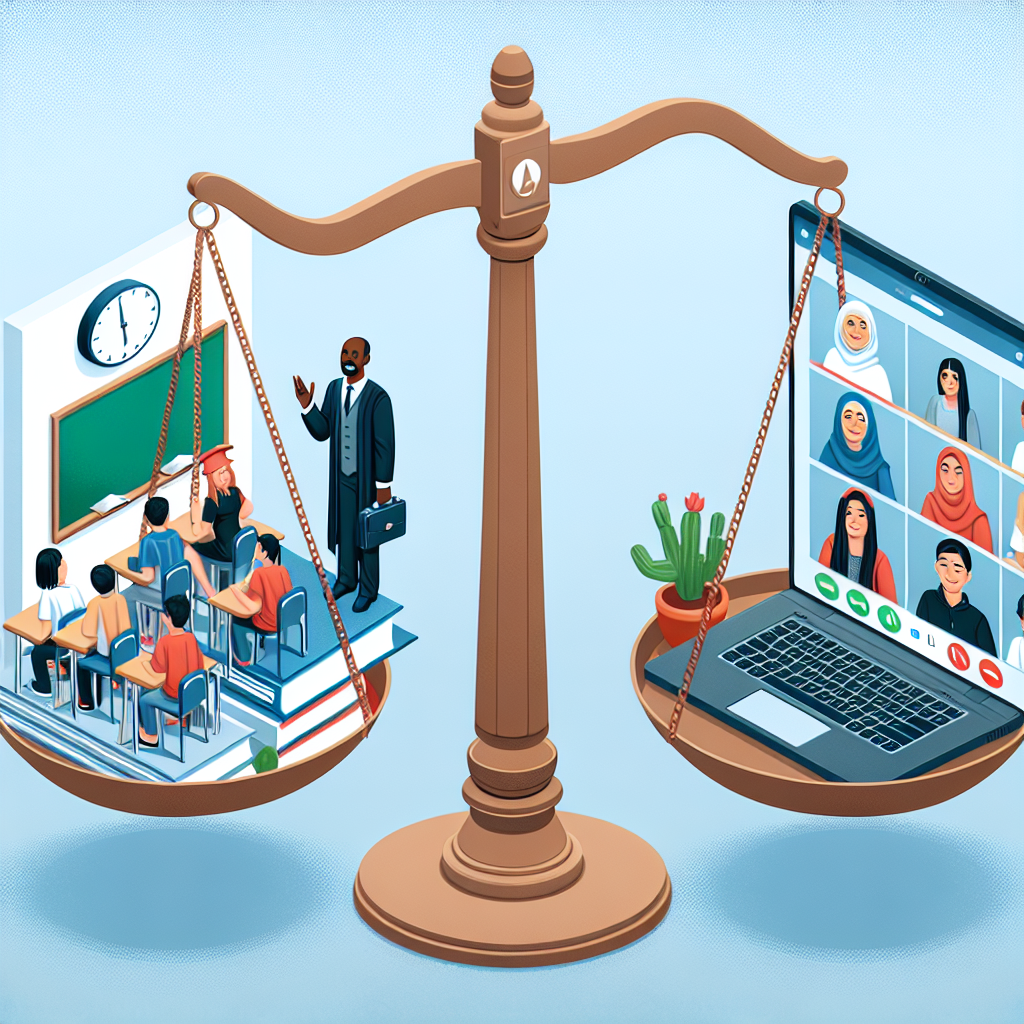-
Table of Contents
Introduction

The COVID-19 pandemic has brought about significant changes in various aspects of our lives, including education. With the closure of schools and universities to prevent the spread of the virus, online learning or “pembelajaran daring” has become the new norm in Indonesia. This shift has sparked a debate on the effectiveness of online learning compared to traditional face-to-face learning or “tatap muka.” In this article, we will explore and compare the effectiveness of online learning and face-to-face learning in Indonesia, considering various factors such as student engagement, academic performance, and social interaction.
Student Engagement
Online Learning
Online learning offers flexibility and convenience for students, allowing them to access educational materials and participate in classes from anywhere with an internet connection. However, maintaining student engagement can be a challenge in this setting. Without face-to-face interaction, students may feel isolated and lack motivation. The absence of physical presence and direct supervision can also lead to distractions and reduced focus.
Face-to-Face Learning
In face-to-face learning, students have the opportunity to interact with their peers and teachers directly. This interaction fosters engagement and active participation in class discussions and activities. The physical presence of teachers also allows for immediate feedback and clarification of doubts, enhancing student understanding and engagement.
Comparison
While online learning provides flexibility, face-to-face learning seems to have an edge in terms of student engagement. The direct interaction and immediate feedback in face-to-face learning create a conducive environment for active participation and higher levels of engagement.
Academic Performance
Online Learning
Online learning platforms offer various tools and resources to support student learning, such as recorded lectures, online quizzes, and discussion forums. Students can access these materials at their own pace, allowing for personalized learning. However, the lack of face-to-face interaction and direct supervision can make it challenging for teachers to assess students’ understanding and provide timely assistance. This can potentially hinder academic performance.
Face-to-Face Learning
In face-to-face learning, teachers can observe students’ progress and understanding in real-time. They can adapt their teaching methods and provide immediate assistance to students who are struggling. The physical presence of teachers also allows for more effective monitoring of students’ academic performance and the identification of areas that need improvement.
Comparison
When it comes to academic performance, face-to-face learning has proven to be more effective. The immediate feedback and personalized attention provided by teachers contribute to better understanding and retention of knowledge. Online learning, while offering flexibility, may lack the same level of support and guidance, which can impact academic performance.
Social Interaction
Online Learning
Online learning can limit social interaction among students. The absence of physical classrooms and face-to-face communication can lead to feelings of isolation and hinder the development of social skills. Collaborative activities and group discussions may not be as effective in an online setting, as students may face challenges in coordinating and communicating effectively.
Face-to-Face Learning
Face-to-face learning provides ample opportunities for social interaction. Students can engage in group work, participate in extracurricular activities, and build relationships with their peers. These interactions contribute to the development of social skills, teamwork, and a sense of belonging within the educational community.
Comparison
In terms of social interaction, face-to-face learning surpasses online learning. The physical presence of students and teachers allows for meaningful social connections and the development of essential interpersonal skills. Online learning, while offering some opportunities for interaction, cannot replicate the same level of social engagement as face-to-face learning.
Conclusion
In conclusion, both online learning and face-to-face learning have their advantages and disadvantages. While online learning offers flexibility and convenience, face-to-face learning excels in terms of student engagement, academic performance, and social interaction. It is important to note that the effectiveness of each method may vary depending on the individual student and the subject matter being taught.
As Indonesia continues to navigate the challenges posed by the COVID-19 pandemic, a blended approach that combines elements of online learning and face-to-face learning may be the most effective solution. This hybrid model can provide the flexibility of online learning while ensuring the benefits of face-to-face interaction and personalized attention. It is crucial for educational institutions and policymakers to adapt and innovate to create a learning environment that maximizes student engagement, academic performance, and social interaction, ultimately preparing students for a successful future.
